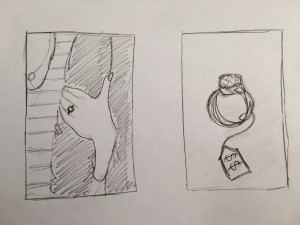For the final project, I want to use the article “How an Ad Campaign Invented the Diamond Engagement Ring” (read here). The article talks about how in the late 1930s, the practice of giving a diamond engagement ring was on a slow rise and De Beers Consolidated Mines, Ltd. wanted to get more people excited about diamonds so they hired N.W. Ayer, a New York based ad agency to build a campaign that would popularize the sale of diamonds. The campaign coined the phrase “a diamond is forever,” and sold people the idea that diamonds were ” symbols of indestructible love.” This strategy proved insanely successful for De Beers. As the article says, “Between 1939 and 1979, De Beers’s wholesale diamond sales in the United States increased from $23 million to $2.1 billion.” Today, it’s commonplace to propose with a (huge) diamond and many women aren’t satisfied with anything less than amazing. It’s interesting to see that there is such importance placed on a piece of jewelry and it all started with an advertising campaign.
The ideas I have in mind for the shoot are a close up of a ring itself (maybe in a box or on a table) to show it off, for a ring to be on someone’s finger (making it a little more personal/romantic), or a more humorous approach like a ring with a price tag or ad attached.
- The text is informational; the tone isn’t overly serious and it’s very positive in the beginning when the author talks about his personal experience.
- My approaches are literal because they both show an engagement ring. The idea with the tag/ad would be more literal than the other since it’s actually showing the reason/method N.W. Ayer made the original campaign while the other idea is more about the emotion or people associated with engagement.
- I think one still life approach is necessary because my main focus is the importance placed on the ring itself. One approach with people involved is also necessary to give the shot a little more personality and make it relatable.
- My models would be whoever is in my group if they’re willing. I don’t plan on using any faces in the photos, just arms/hands. I’ll need both a male and female participant.
- The object in each photo would be the ring. A price tag or a ring box may be included as well.
- Both ideas need a good amount of light – the couple shot needs to be well lit and the ring shot needs enough light on the ring itself to show the detail but not in the overall photo.
- I want the photo with the people to resemble a shot that would be in engagement photos – very bright, soft, and optimistic but also romantic. For the ring by itself, it would be similar to food photography in terms of the shallow depth of field but I would want it to be darker and a little less optimistic.




